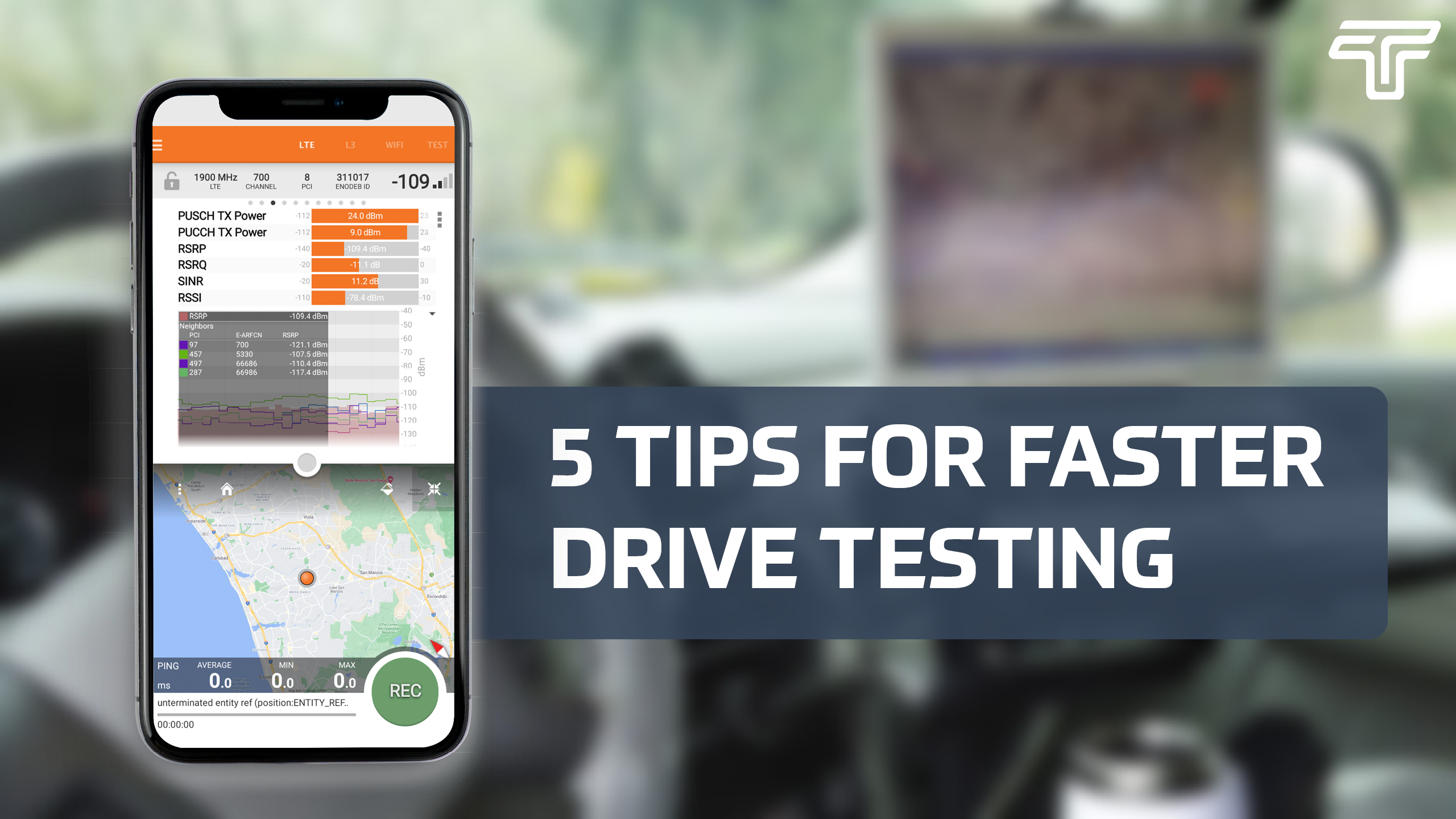Stay up to date with Tempo Announcements and News

5 Secrets For Faster Drive Testing on 5G Networks
With the advent of 5G technology, network operators face the challenge of efficiently testing and optimizing their networks to ensure optimal performance. Drive testing, a method that involves collecting data while moving through a network's coverage area, can be time-consuming and resource-intensive. However, by implementing the following five tips, network operators can streamline the drive testing process and reduce time spent on interpreting results, ultimately improving the efficiency of their 5G network testing.
1. Pre-Setup of Test Scripts
One effective way to reduce drive testing time on 5G networks is by setting up test scripts before going on-site. Test scripts define the specific test scenarios and measurements to be conducted during the drive test. By pre-configuring the test scripts in advance, technicians can save valuable time that would otherwise be spent on manual setup during on-site testing. This approach enables a more streamlined and efficient drive testing process, allowing operators to focus on data collection and analysis rather than technical setup.
2. Pre-Define Walk or Drive Test Routes
Another key aspect of minimizing drive testing time is to pre-define walk or drive test routes. This involves planning the exact path to be taken during the test, considering the specific areas and cells that require evaluation. By carefully designing the route beforehand, operators can ensure that testing time is utilized efficiently, covering the areas of interest and avoiding unnecessary duplication. Additionally, pre-defined routes enhance consistency across multiple drive tests, enabling accurate performance comparisons and trend analysis.
3. Utilize Remote Monitoring by Subject Matter Experts
To optimize the drive testing process and ensure data collection accuracy, it is beneficial to employ remote monitoring by subject matter experts. This involves having experienced professionals remotely monitor the ongoing drive test in real-time. By leveraging remote monitoring tools and technologies, subject matter experts can verify that the test is collecting the correct Key Performance Indicators (KPIs) and is following the predefined route accurately. Immediate feedback from experts can help identify any issues or discrepancies during the test, enabling prompt adjustments and enhancing data quality.
4. Embrace Cloud Storage for Data Management
Drive testing generates a substantial amount of data, which can be challenging to manage efficiently. To mitigate the risk of losing valuable data and enable quick collaborative team review, network operators should leverage cloud storage solutions. Storing drive test data in the cloud provides a secure and scalable platform for data management. It allows multiple team members to access and analyze the data simultaneously, facilitating collaboration and reducing the need for physical data transfers. Cloud storage also offers enhanced data protection and disaster recovery capabilities, ensuring that critical test data is preserved.
5. Use Customized Report Templates
Interpreting and analyzing drive test results can be time-consuming, especially when dealing with vast amounts of data. To streamline the analysis process, network operators should create customized report templates that highlight the Key Performance Indicators (KPIs) pertinent to their specific business objectives. By tailoring the report templates to focus on relevant KPIs, operators can easily identify areas that require improvement and quickly assess the network's performance against their predefined targets. This approach saves time and allows for efficient decision-making based on actionable insights.
Conclusion
Efficient drive testing is crucial for ensuring optimal performance and reliability in 5G networks. By implementing the five tips outlined above, network operators can significantly reduce drive testing time and improve overall efficiency. Pre-setting test scripts, pre-defining test routes, utilizing remote monitoring, leveraging cloud storage, and using customized report templates all contribute to streamlining the drive testing process, enabling operators to make data-driven decisions swiftly and effectively. Embracing these strategies will lead to enhanced network performance and a more seamless 5G experience for end-users while expending less time and money.
Tempo’s Airscout Mobility offers all the features necessary to make your drive/walk testing as quick and efficient as possible. For more information visit our website at www.tempocom.com.
